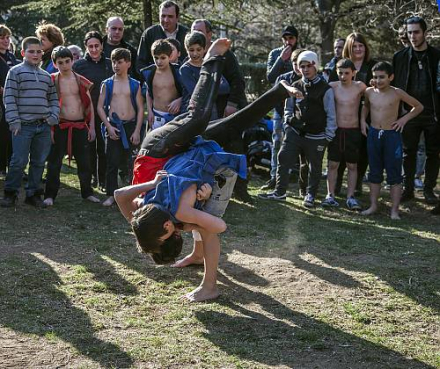
TBILISI, DFWatch–Chidaoba has been added to the Representative List of Intangible Cultural Heritage of Humanity by UNESCO.
The traditional Georgian style of wrestling has bred dozens of Olympic and world champions in freestyle and Greco-Roman wrestling as well as judo.
“The practice is a complex phenomenon that combines elements of wrestling, music, dance and special garments (‘chokha’). Having had a combat function until the late Middle Ages, Chidaoba gradually became a spectacular sport,” reads the press release published on UNESCO’s website.
“The code of conduct is chivalric, and occasionally the wrestlers leave the arena with a Georgian folk dance. Chidaoba uses an important number of special wrestling holds: there are an estimated 200 such holds and counter-holds, the combination of which speaks to the wrestlers’ creativity. The practice encourages a healthy lifestyle and plays an important role in intercultural dialogue.”
The decision was adopted at the thirteenth session of the Intergovernmental Committee for the Safeguarding of the Intangible Cultural Heritage in Port Louis, Republic of Mauritius.
Currently Georgia is represented by four items on the list, which also includes Georgian polyphonic singing (inscribed in 2008), Ancient Georgian traditional Qvevri wine-making method (2013) and living culture of three writing systems of the Georgian alphabet (2016).
Chidaoba has been a cult sport among the populace throughout Georgia for centuries, particularly in central parts of the country, called Shida (Inner) Kartli, roughly encompassing Gori, Khashuri, Kareli, Kaspi and Mtskheta municipalities. Many decorated Georgian wrestlers who won numerous medals in Olympic, World and European championships took their first steps in the world of wrestling by training in Chidaoba.

